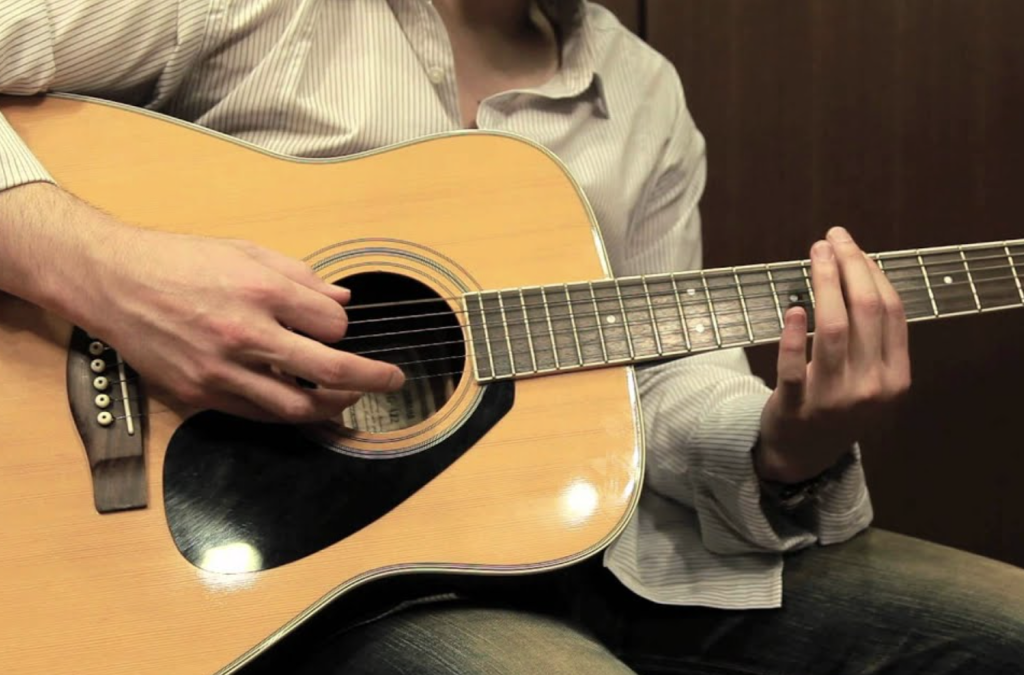If you haven’t played the guitar, you might only be aware that there are either electric or acoustic ones.
However, there is also the classical guitar, which may seem to be the same as acoustic (and there are similarities) but it has several differences. What’s the difference between the classical and acoustic guitar? Take a look.
Classical Guitar
This is also known as a nylon string or Spanish guitar. It dates back as far as the 16th century, and appears to have originated in Spain.
Originally, guitars were called lutes and only had four strings. But musicians in Spain added two more strings to create what they called a “vihuela.”
As time passed, the instrument developed into what is known today as the classical guitar. It’s distinct from the acoustic guitar based primarily on the finger technique used to play it, as well as the style of music associated with it.
Classical guitarists use a picking technique in which individual strings are plucked with the player’s fingernails. You can recognize classical guitarists because of their overly long fingernails.
The fretboard on a classical guitar is typically much wider and flatter than the ones you’ll see on standard acoustic guitars. It also usually has a smaller body.
A classical guitar is much easier to hold and can be a handy learning tool when you’re starting out.
Acoustic Guitar
The acoustic guitar became standardized in 1850 by Antonio Torres Jurado. He reduced the thickness of the strings of the mandolin and increased the surface area of the guitar’s soundboard, which is the face of the guitar where you see the large center hole.
The acoustic guitar has six strings just like the classical guitar, but they are typically made of steel. You may still use nylon strings, especially when you’re a beginner and working to build appropriate callouses on your fingers; or to learn how to press on the strings with enough pressure to prevent an unappealing buzzing sound.
The steel strings are attached to the bridge pins of the guitar. The bridge is the structure at the bottom that holds the pins which connect the strings to the top pegs at the far end of the neck or fretboard.
On a classical guitar, the nylon strings are attached directly to the bridge. This can make that model a little more difficult to tune than a standard acoustic guitar.
Which Guitar Should I Choose?
Deciding between whether to learn and play on a classical guitar or an acoustic can depend on many different considerations. It’s not a question of which guitar is “better,” because they’re both incredible instruments to play.
The crux of the matter are your specific needs or goals. Both guitars have a soundhole that amplifies the strumming or picking; and they’ll both produce a quality sound that may have a different feel, but still generate a wonderful tone.
The first and probably most important consideration is what kind of music you intend to play. If you’re interested in learning more popular songs of the type you’ve heard on the radio, you’re probably going to want to select an acoustic guitar.
If you’re more interested in folk or flamenco that may involve intricate picking patterns, then the classical guitar is more apt to be a better fit.
If you’re just starting, though, you may find it easier to learn to play on a classical guitar. Again, this will be easier because the body is smaller and easier to hold. The nylon strings will also be less tough on beginners’ fingertips than steel strings.
Summary
As we’ve explained, there are a number of differences between classical and acoustic guitars. You might not perceive them at a glance, but when you study the body structure closely, you’ll see they are not identical.
Figure out what kind of music appeals to you and take it from there. You can also visit a local guitar store and try a few of guitars for their feeling and sound.
In the end, you’ll want to go with what feels best to you, when you’re starting to learn the guitar.
Laila Azzahra is a professional writer and blogger that loves to write about technology, business, entertainment, science, and health.
